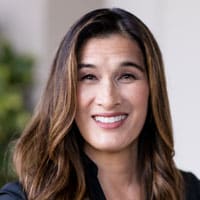Editor’s note: Marguerita (Rita) Cheng is a longtime columnist with Rethinking65. To read more of her articles, click here.

If you’ve ever guided a client through annuity inheritance, you know it can be a maze of tax rules and payout options. Now, imagine your grieving client walking into your office with 12 envelopes stuffed with paperwork for six different annuity accounts. That’s exactly what happened to one of my clients last year.
Inheritance is often painted as a financial windfall. But the loss of a loved one brings overwhelming grief. Sometimes, our instinct as advisors is to jump into analysis mode when what our client really needs first is someone to acknowledge their loss.
Where We Started
When my client, Sarah, sat down in my office, she handed me a thick stack of envelopes. Her face was equal parts grief and confusion as she leaned in and said, “I don’t know what to do with any of this.”
My experience has taught me that this first interaction isn’t about solutions, it’s about understanding. So, I looked at Sarah’s documentation and tried to help her understand the investment vehicles bequeathed to her. She had inherited six annuities from her mom, who passed away in 2024. Her dad predeceased her mom in 2019, at which time her mom had inherited some of his annuities.
Non-qualified Deferred Variable Annuities
Four of the annuities Sarah inherited were non-qualified deferred variable annuities still in the accumulation phase. Sarah thought she had to make quick decisions, but I helped her complete the estate settlement paperwork and explained her options. For these four non-qualified annuities, Sarah had three options: 1) cash out, 2) purchase a new annuity with the same company, or 3) delay her decision today and do something no later than the fifth anniversary of the date of death. In the end, she chose the option that gave her five years to decide what to do.
Non-qualified Fixed Annuity
Another one of the inherited annuities was a non-qualified fixed annuity in annuitization. Sarah’s first instinct was to cash out this annuity entirely. When you’re overwhelmed, liquidating everything can feel like the simplest solution. But we talked through why continuing to hold this annuity made more sense.
In brief, as the beneficiary of an annuity in the payout phase or annuity phase, she was able to continue to receive the income stream. She used the increase in her monthly cash flow to take advantage of catch-up contributions in her employer sponsored retirement pln.
I also set up withholding of federal and state taxes from Sarah’s payouts to prevent an unpleasant surprise the following April. A non-qualified annuity is funded with after-tax dollars and offers tax-deferred growth on the investment, meaning the earnings are not taxed until withdrawal.
Qualified Variable Annuity
Sarah’s final inherited annuity, a qualified variable annuity, was already subject to required minimum distributions (RMDs). After mapping out Sarah’s full financial picture — including her 401(k), Social Security projections and other investments — I recommended transferring this annuity to an inherited IRA.
Sarah’s mother Julia passed away at the 86 and was subject to RMDs. Because Sarah is a non-spousal beneficiary, she is subject to the 10-year rule. Sarah can always withdraw the funds before the required 10-year period, but by transferring to an inherited IRA, she has more flexibility and options.
Building Understanding
Sarah’s biggest revelation was that she had choices. She assumed she was locked into whatever structure was already in place for these annuities. This is a common misconception, so we went over the beneficiary options and how different types of annuities have different rules.
I built a simple spreadsheet to track each annuity’s value, tax status, and our next steps. This visual summary helped Sarah feel more in control and confident about her decisions.
Once she understood her options, we were able to focus on how these assets fit into her broader financial goals. She wanted to pay off her mortgage before retiring, so the five-year window on the deferred annuities gave us strategic flexibility. We could time the annuities’ distributions to support debt payoff while managing her tax bracket.
We also explored legacy planning and how keeping some of the annuities intact gave her a tax-efficient way to pass wealth to her children. In the end, what started as an overwhelming inheritance became a key piece of her long-term financial strategy.
Practical Lessons for Fellow Advisors
Here’s what this experience taught me that might help you with similar clients:
Create Room to Grieve
Sarah needed room to grieve while making these financial decisions. We spread three separate meetings over two months rather than trying to resolve everything in one marathon session. It led to better decision-making and a stronger advisor-client relationship.
Take On the Administrative Burden
A stack of twelve envelopes was stressful for Sarah. I organized everything into clear categories and handled most of the paperwork myself. I still kept Sarah involved in key decisions, but did so without drowning her in administrative details.
Educate Around Beneficiary Options
Even well-informed clients may not know what’s possible with inherited assets. Sarah was relieved to know she didn’t have to make immediate decisions and grateful to receive clarity around each account’s tax implications.
The Human Element in Financial Planning
The loss of a loved one is always difficult. Add a mountain of legal and financial documents to grief, and even the most composed clients can feel completely paralyzed. But sometimes, what clients need the most isn’t just answers. They need a guide to help them sort through complex decisions when they’re at their most vulnerable.
Marguerita (Rita) Cheng, CFP, is the chief executive officer of Blue Ocean Global Wealth. She is passionate about helping clients navigate some of life’s most difficult issues — divorce, death, career changes, caring for aging relatives — so they can feel confident and in control of their finances. Rita is a past spokesperson for the AARP Financial Freedom Campaign. She volunteers her time as a SoleMate for Girls on the Run, raising money to win scholarships for girls.







